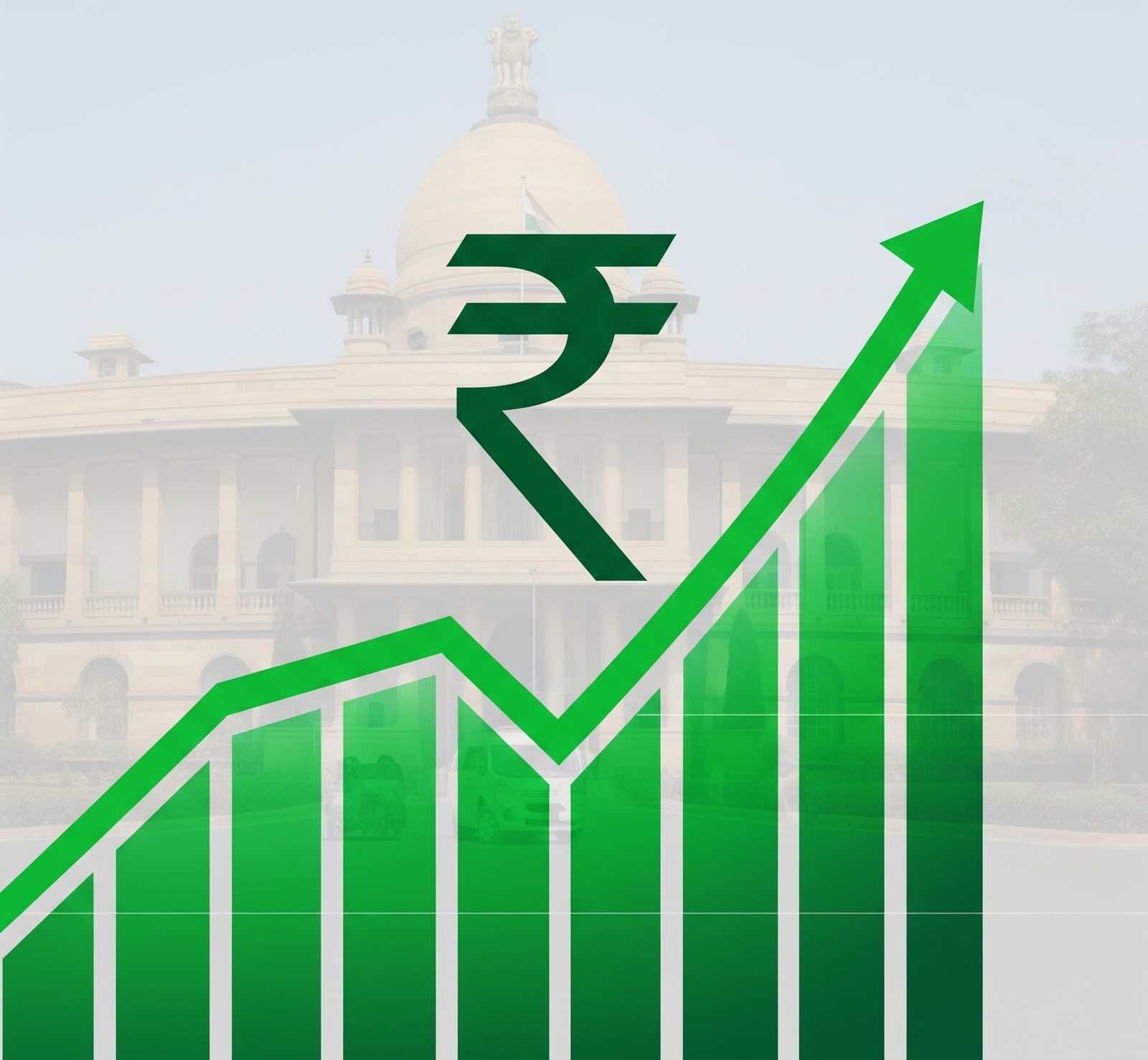India’s financial narrative is taking an exciting new turn, and at its heart is the Reserve Bank of India (RBI). For months, global markets watched for signs of monetary easing, but India, it seems, isn’t just easing; it’s leading the charge! Forget the whispers of a prolonged pause; the interest rate party has officially kicked off in India, offering a breath of fresh air for borrowers and a new landscape for investors.

💡 Inflation: The Green Light for Rate Cuts
Remember those persistent concerns about inflation keeping the RBI’s hands tied? Well, the latest data has brought significant relief. India’s Consumer Price Index (CPI) inflation for May 2025 came in at a provisional 2.82%. This isn’t just a slight dip; it’s a dramatic fall, marking the lowest headline inflation reading since February 2019! Even more encouraging, the Consumer Food Price Index (CFPI) recorded a meager 0.99% inflation in May, dispelling fears of runaway food prices.
This sharp deceleration in price pressures—attributed to robust agricultural output, a favorable base effect, and overall economic stability—has given the RBI the critical room it needed. The central bank’s primary mandate is price stability, and with inflation comfortably within its 2-6% target band, and even below its 4% medium-term target, the focus has broadened to supporting growth. The disinflationary trend has been sustained, providing policymakers with the confidence to pivot towards a more growth-supportive stance without jeopardizing price stability.
🏦 RBI’s Bold Move: A 50 BPS Cut Signals Confidence
In its most recent Monetary Policy Committee (MPC) meeting on June 6, 2025, the RBI delivered a significant surprise: a 50 basis points (bps) cut to the repo rate, bringing it down to 5.50%. This wasn’t a cautious tweak; it was a decisive pivot, marking the third consecutive rate reduction and a cumulative 100 bps easing since February 2025. This series of cuts underscores the RBI’s strong conviction that inflation is under control and that the economy now requires a boost to maintain its growth momentum.
The shift in the RBI’s monetary policy stance from ‘accommodative’ to ‘neutral’ further underscores this confidence. RBI Governor Sanjay Malhotra emphasized that the significant easing in inflation allowed for a bolder move to stimulate economic activity. The central bank has even revised down its inflation forecast for Fiscal Year 2026 to 3.7%, signaling a strong belief in stable and moderate price pressures ahead. This proactive stance positions India as one of the few major economies where the central bank is actively easing policy, showcasing a resilient economy ready for a growth push. The decision, voted 4:1 by MPC members, also included a significant 100 bps cut in the Cash Reserve Ratio (CRR) to 3%, a move aimed at injecting substantial liquidity into the banking system, further aiding policy transmission.

India’s Rate Reset
📈 What This Means for Your Wallet and Investments
This decisive rate cut by the RBI has tangible implications across the financial spectrum:
For Borrowers:This is unequivocally good news! Lower repo rates translate directly to cheaper loans. Expect your Home Loan EMIs, personal loan interest rates, and business credit lines to become more affordable. This much-needed relief is poised to reignite consumer spending and investment, particularly in rate-sensitive sectors like real estate, automobiles, and consumer durables. Developers might see renewed interest, and individuals planning big-ticket purchases could find the financing more accessible, potentially leading to a resurgence in demand that was previously dampened by higher borrowing costs.
For Savers:While lower lending rates are great for borrowers, they often mean a slight dip in returns on traditional savings instruments like Fixed Deposits (FDs). Banks are already adjusting their FD rates downwards in response to the RBI’s moves. Conservative investors might need to explore alternative avenues offering competitive, yet safe, returns, such as RBI Floating Rate Savings Bonds (currently offering 8.05% for July-December 2025), or consider debt mutual funds with shorter durations if they are comfortable with a bit more market exposure.
For Stock Market Investors:The mood is generally positive. Lower interest rates typically boost corporate earnings by reducing borrowing costs and stimulating demand. Rate-sensitive sectors like real estate, auto, NBFCs, and capital goodsare likely to be major beneficiaries as demand picks up. Banks, while facing potentially tighter margins on loans, could see increased credit demand and better asset quality as the economy strengthens. The overall market sentiment is expected to remain buoyant, driven by robust domestic consumption and investment prospects, with a focus shifting from defensive plays to growth-oriented stocks.
For Bond Markets:Bond yields have reacted as expected, trending downwards. The benchmark 10-year government bond yield is currently hovering around 6.32%, reflecting the market’s anticipation of continued monetary easing and lower inflation expectations. This is a clear indicator that the bond market has absorbed the rate cuts and is looking forward to a lower interest rate regime, making government bonds attractive for institutional investors seeking steady, albeit now lower, returns. Short-term yields have fallen even more sharply, steepening the yield curve as market participants price in further easing in the near future.

🌍 Global Picture: India Stands Out
It’s not just India. There’s a broader global narrative of central banks beginning to pivot, but India appears to be ahead of the curve.
The US Federal Reserve, while holding its benchmark rate steady at 4.25%-4.5% in June, has nevertheless signaled the likelihood of two rate cuts by the end of 2025. This cautious stance is due to persistent, albeit moderating, inflation and robust job data. The Fed remains data-dependent, with markets eagerly awaiting their July meeting for further clarity. Their gradual approach contrasts with the RBI’s more aggressive easing.
The European Central Bank (ECB), on June 5, 2025, also cut its key interest rates by 25 bps, bringing the deposit facility rate to 2.00%. The ECB has been quicker to ease than the Fed, given their inflation trajectory, but they are also signaling a cautious, data-dependent path forward, with expectations for a pause in July before potentially considering one more cut later in the year.
This global pivot towards easing, with India already leading with significant cuts, reinforces the confidence in India’s macroeconomic stability and its ability to chart its own course, even amid global uncertainties. The strong foreign exchange reserves (nearly $700 billion as of June 2025) also provide a robust buffer, protecting the Indian rupee from significant volatility and ensuring stability in foreign investments. India’s decoupling from the more hawkish global stance reflects its unique economic cycle and success in managing inflation.
🚀 What’s Next? Key Indicators to Watch
While the current outlook is undeniably positive, keeping an eye on these key triggers will be crucial:
Monsoon Performance:As always, the quality and distribution of the monsoon rains will be vital for agricultural output and, consequently, food inflation. A good monsoon could further cement the disinflationary trend and support rural demand.
Global Commodity Prices:While global demand slowdown is currently keeping crude oil and other commodity prices in check, geopolitical developments, especially in the Middle East, remain a wildcard. Any significant surge in oil prices could reintroduce inflationary pressures.
Next CPI Data:The June 2025 CPI data, expected on July 14, will be closely watched for confirmation of the disinflationary trend. Any unexpected uptick could temper further rate cut expectations.
Industrial Production and GDP Data:Stronger industrial output and robust GDP numbers could solidify the growth narrative and give the RBI further confidence in its easing trajectory, indicating that the economy is responding well to policy support.
Global Interest Rate Trends:While India is currently forging its own path, major moves by the US Fed or ECB could still influence capital flows and, indirectly, RBI’s future considerations, particularly if there’s a significant divergence in policy.
✍️ Final Thoughts: A New Era of Growth?
The RBI’s recent actions signal a crucial shift from solely taming inflation to actively fostering growth. Governor Malhotra’s confident tone and the aggressive rate cuts reflect a central bank that believes it has successfully navigated the inflationary storm and is now ready to support economic expansion. This proactive approach sets India apart and positions it for sustained growth in the medium term.
For businesses, investors, and everyday consumers, this translates into a more supportive financial environment. Lower borrowing costs, improving consumer sentiment, and a stable inflation outlook paint a promising picture for India’s economic trajectory in the second half of 2025 and beyond. Smart financial planning, adapted to this new era of lower interest rates and increased liquidity, will be key to maximizing opportunities and navigating the evolving landscape.
Stay updated with the latest in Indian finance and economy. Follow IndNewsExpress.com for daily insights.



